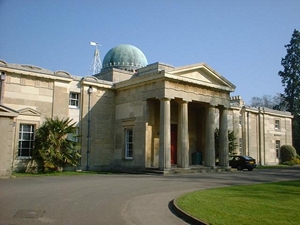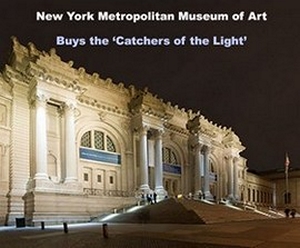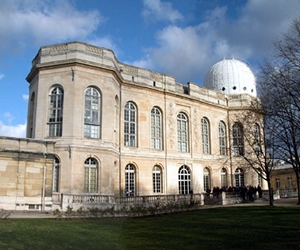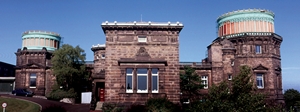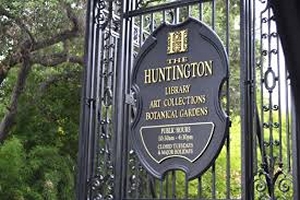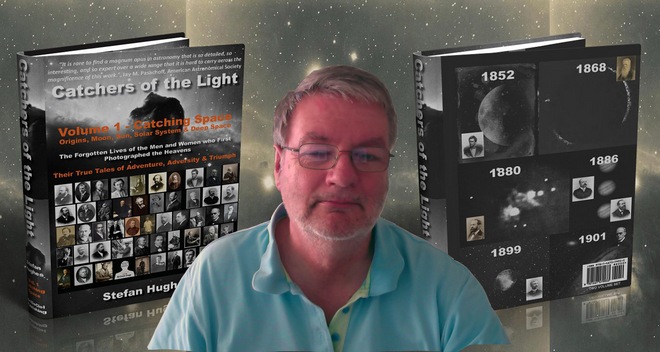
Many of the most famous and prestigious of scientific institutions, museum and libraries have purchased the 'Catchers of the Light' thus confirming the Book's status as an invaluable source of reference on the History of Astronomical Photography; and indeed astronomy, astrophysics, history of science and photography in general, includingL
 |
|
 The ‘Catchers of the Light’ tells the true stories of the men and women who first photographed the heavens.
Their lives are ones full of adventure, adversity and triumph - which would test the abilities of even the best author or screenwriter to recreate as a work of fiction. Sadly their names are largely unknown and all but forgotten - confined now to the closed pages of history. Through the book you are about to read, they come alive once again.
This book tells their stories and those of the many others who had to overcome misfortune, disease, war, death, Irish Leprechauns and even very unfriendly Cannibal natives before they could even begin to take the many hundreds of photographs you will see in its 1600 pages.
The book is divided into nine parts, each covering a specific aspect of the history of astronomical photography - its Origins, Lunar, and Solar Astrophotography, Solar System and Deep Space, Astrophotography, Photographic Astronomical Spectroscopy, Photographic Sky Surveys and Modern Digital Astrophotography. Also included are a number of useful Appendices on Astrophotography and a comprehensive Index.
Its Author Dr. Stefan Hughes has spent seven years researching and writing this book, as well as the forty years of experience and expertise needed to complete this magnum opus in a diverse career as an amateur and professional Astronomer, a qualified Genealogist and a Historian. As a young boy the Author too like Edward Emerson Barnard looked up at the stars and wondered, marvelling at the magnificent photographs he saw in the pages of his books - and especially the iconic ‘Horsehead’ nebula, longing to see it in his modest telescope - only to be disappointed. Forty years later he succeeded through the ‘eyes’ of the modern wonders of the Digital Camera and the GOTO telescope.
This inspired him to write a book of which one eminent astronomer wrote: “It is rare to find a magnum opus in astronomy that is so detailed, so interesting, and so expert over a wide range that it is hard to carry across the magnificence of this work.”
The Author has created a book which fully encapsulates the inscription found in an Ancient Egyptian Tomb, which reads: “Speak My Name and I Will Live for Ever”
In doing so he has ensured that the lives of the men and women who captured the heavens on photographic plate, plastic film and computer chip will not be forgotten.
“Every day our eyes catch the light of our memories – time spent with family, the journey to work, a special holiday, a beautiful sunset or a dark starlit night. Each image captured is a picture drawn in light – a photograph: only to be lost in our minds or forever forgotten. Nearly two hundred years ago a small group of amateur scientists achieved what had eluded mankind for centuries – the ability to capture a permanent record of an image seen by their own eyes – a moment in time frozen onto a surface. They had discovered Photography.”
They were the ‘Catchers of the Light’ - which tells of the 'Forgotten Lives of the Men and Women who First Photographed the Heavens'.
|
|
|

Dr. Stefan Hughes began his career as a professional astronomer, gaining a 1st Class Honours degree in Astronomy from the University of Leicester in 1974 and his PhD four years later on the 'Resonance Orbits of Artificial Satellites due to Lunisolar Perturbations', which was published as a series of papers in the Proceedings of the Royal Society of London. After graduating he became a Research fellow in Astronomy, followed by a spell as a lecturer in Applied Mathematics at Queen Mary College, London. Then came a ten year long career as an IT Consultant. In 'mid life' he spent several years retraining as a Genealogist, Record Agent and Architectural Historian, which he practiced for a number of years before moving to the Mediterranean island of Cyprus, where for the past ten years he has been imaging the heavens, as well as researching and writing the 'Catchers of the Light' - A History of Astrophotography.
